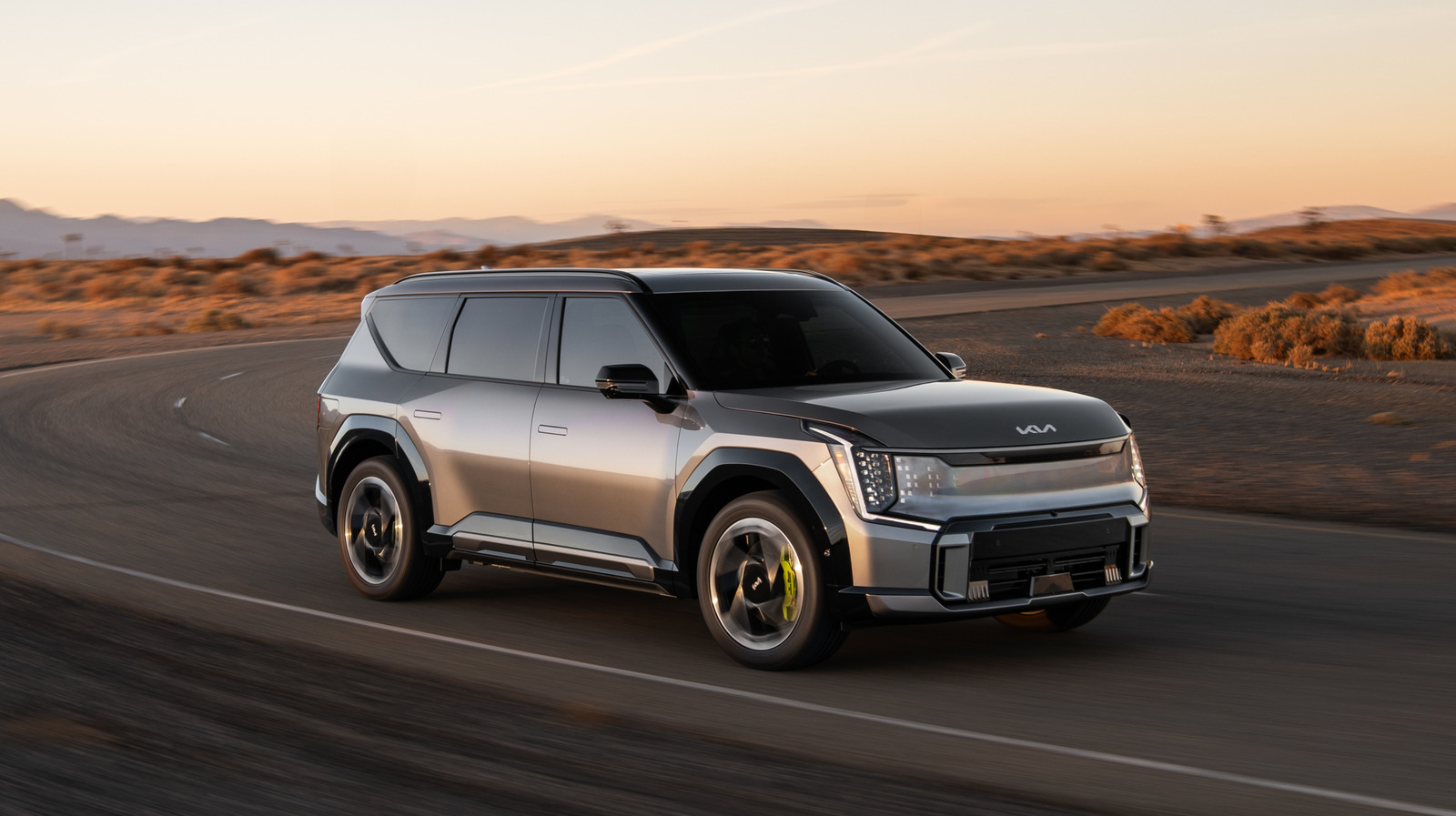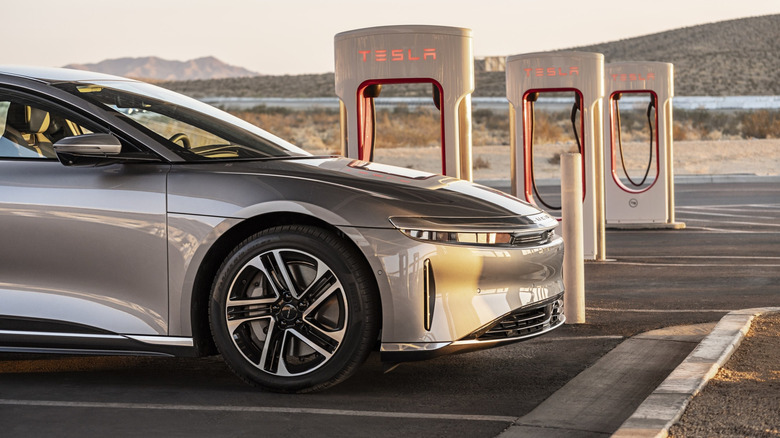EV range ratings are determined by the EPA following a standardized test on a dynamometer that simulates urban, highway, and steady-state driving conditions in the United States. It’s not a perfect science, though, as some EVs under-deliver on their EPA range while others overperform. A Lucid Air Grand Touring recently set the world record for longest EV trip on a single charge at a bladder-busting 749 miles, but a challenge arises when you take a road trip and the vast majority of the miles you cover are driven on wide open freeways at high speeds. This is the least efficient way to drive an electric vehicle, since sustained high speeds subject a vehicle to significant aerodynamic drag, and unless you hit a traffic jam there’s little-to-no opportunity for an EV to recuperate energy through regenerative braking. Car and Driver conducted a test to determine how exactly high speeds affect EV range, and as it turns out there’s a significant impact on range the faster you drive.
In order to achieve these findings, Car and Driver drove two EVs and one gas-powered car around the 4.7-mile oval test track at Stellantis’ Chelsea Proving Grounds at four speed intervals — 35 mph, 55 mph, 75 mph, and 95 mph — and used each vehicle’s in-car telematics to calculate their maximum cruising range at each speed. The two EVs in the test were a Lucid Air Pure sedan and a Kia EV9, while a Subaru Forester carried the torch for internal combustion vehicles.
The findings
The combined EPA maximum range estimates are issued following a laboratory test cycle, so real-world range will vary greatly. The EPA does issue a dedicated highway range estimate for EVs, but the number that gets the most publicity is the combined estimate. Car and Driver took a look at the EPA-issued maximum highway range estimates for the Air and EV9, and used data from this test to determine the average speed that each vehicle would have to travel in order to achieve the maximum range. In order to reach its EPA-issued 410-mile highway range, the Lucid would need to be traveling at an average of 49 mph. The Kia’s EPA-issued highway range estimate is 253 miles, and based on this test it would have to have an average speed of 71 mph, which is more realistic than the Lucid’s rating.
The Subaru experienced much higher range degradation as speeds increased, but its maximum cruising range was higher than the EVs to begin with, so it had a cruising range of around 500 miles at 75 mph, down about 200 miles compared to its maximum range at 55 mph. That decrease is more significant than either of the EVs, but since its cruising range is so much higher it’s less of a concern.
While the electric vehicles in this test took significant hits to their maximum ranges at high speeds, their ranges are still much higher than EVs from just a few years ago. There are an infinite number of variables in the real world that impact EV range as well as the fuel efficiency of internal combustion vehicles, but regardless of how you look at it, electric cars have come a long way in a relatively short time span.




